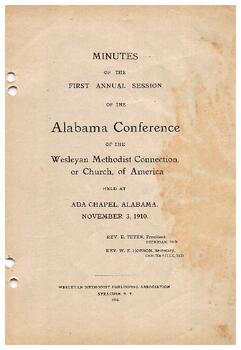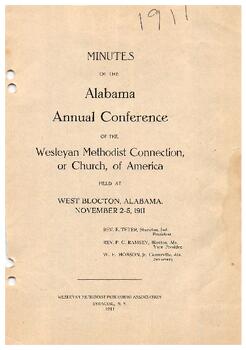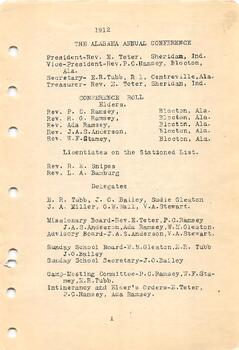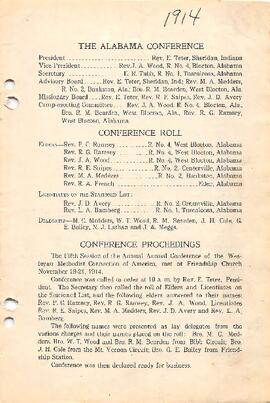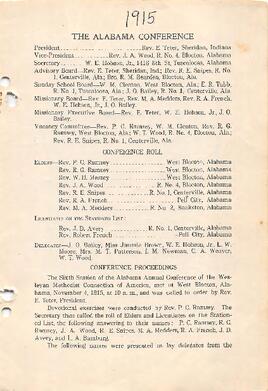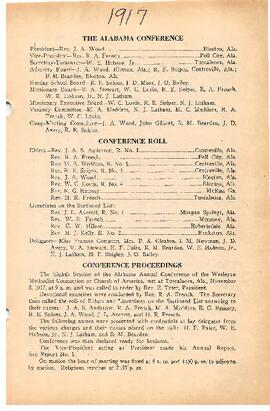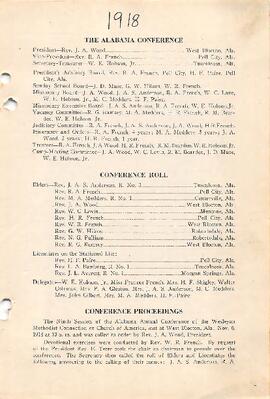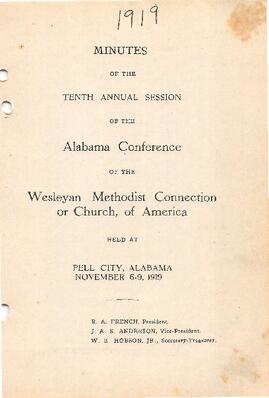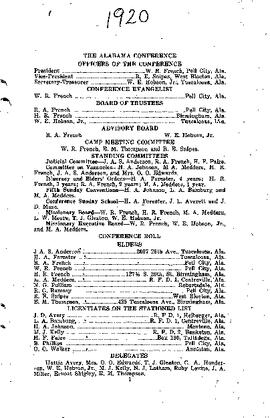Identity elements
Reference code
Name and location of repository
Level of description
Title
Date(s)
- 07/30/1910 (Creation)
Extent
10000
Name of creator
Administrative history
The Wesleyan Methodist Church of America emerged in response to the Methodist Episcopal Church's support of slavery and its centralized, authoritarian governance. In November 1842, leaders O. Scott, J. Horton, and L. R. Sunderland withdrew from the Methodist Episcopal Church and launched The True Wesleyan, a weekly publication explaining their reasons for separation. In December, Luther Lee and L. C. Matlack also withdrew, marking the formal beginning of the Wesleyan movement. Although earlier separations had occurred—particularly in Michigan, where a conference was established—these events laid the foundation for the official organization. The first church of the new denomination was founded in Providence, Rhode Island. In February 1843, a preliminary convention was held in Andover, Massachusetts, which led to a General Convention in Utica, New York, on May 31, 1843. There, the Wesleyan Methodist Church was officially organized and adopted a governing Discipline. The first General Conference convened in October 1844 to revise this Discipline, followed by a second in October 1848, which produced a more comprehensive and clearly organized version.
Content and structure elements
Scope and content
This series comprises records from the Alabama Conference. They capture the district’s role as a vital regional hub within the wider church. The materials include minutes from district conferences, correspondence between local pastors and district leaders, reports from area churches, pastoral appointments, membership and financial statistics, and policy documents specific to the region.
These records reveal how the district guided and supported local congregations and clergy, implemented denominational policies on a regional level, and fostered church growth and ministry within the community.
System of arrangement
Conditions of access and use elements
Conditions governing access
Physical access
Technical access
Conditions governing reproduction
Languages of the material
Scripts of the material
Language and script notes
Finding aids
Acquisition and appraisal elements
Custodial history
Immediate source of acquisition
Appraisal, destruction and scheduling information
Accruals
Related materials elements
Existence and location of originals
Existence and location of copies
Related archival materials
Related descriptions
Notes element
General note
As early as 1886 Rev. Charles Powers, M.D., from Michigan moved to Alabama, and within the course of a few years he succeeded in organizing Wesleyan churches. The first annual session was held on November 10-12, 1910, Friendship [Brent, AL] for the purpose of organizing into a conference. Initially, there were five churches and 238 members. "Four years ago I was authorized to organize a Mission Conference in Alabama. On July 30,1910 I organized said mission conference." –E. Teter.
During the 1950s and 1960s, growing tensions developed between some of the annual conferences and the General Conference leadership, particularly concerning the proposed merger between The Wesleyan Methodist Church and the Pilgrim Holiness Church. By the 1966 conference session, it had become clear that the Alabama Conference would be dividing. The churches which had departed from The Wesleyan Methodist Church had formed a new denomination to be known as the Bible Methodists. The reorganized Alabama conference, which was now a mission conference.
In 1966 the Alabama Conference had 37 organized churches and 1,060 members. About half of Alabama’s Wesleyan Methodist churches and members departed following the 1967–1968 split over centralized authority and the merger into the new Wesleyan Church.
General note
Alabama Conference President's:
Eber Teter, 1910-18
J. A . Wood, 1918-19
R. A. French , 1919-20
W. R. French, 1920-23
R. E. Snipes, 1923-36
E. L. Shigley, 1936-42, 1944-48, 1967-68
Paul M . Allred, 1942-44
S. D . Herron, 1948-51
J. A. Treese, 1951-55, 1964-67
V. 0 . Agan , 1955-64


